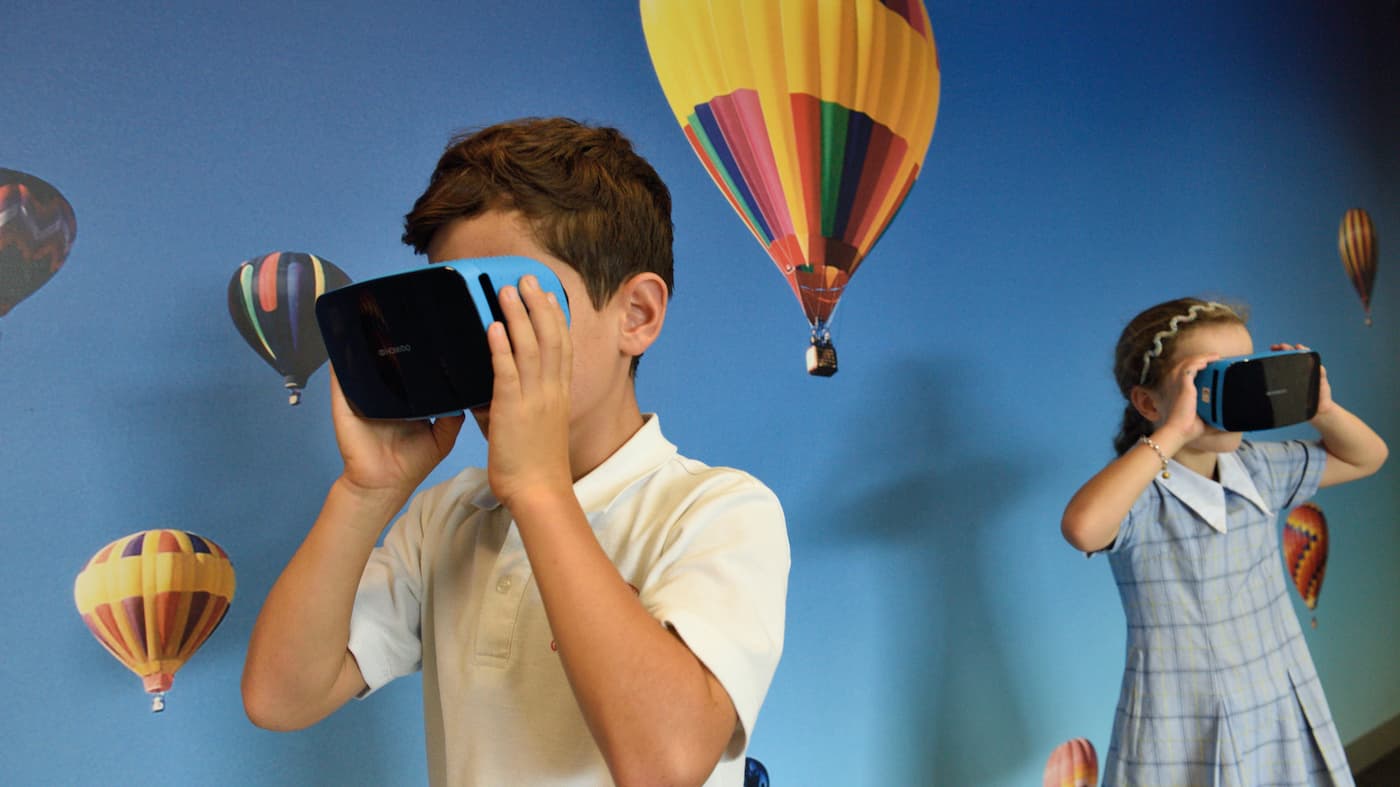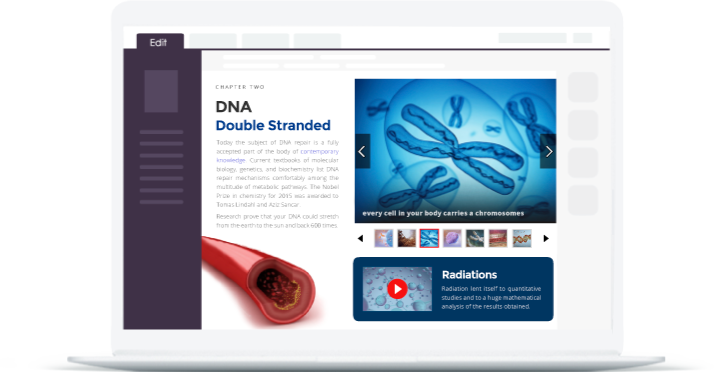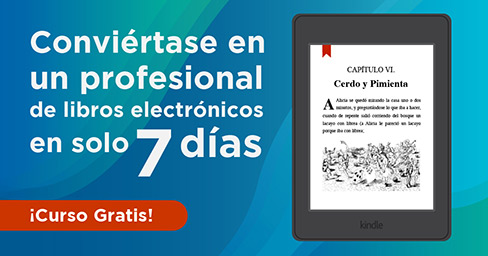Blended Teaching: Models, Benefits, Tools, and More!
Technology has revolutionized the educational scene in the past few years, making the traditional classroom more advanced and efficient in delivering course material. With this major shift, most classrooms now encompass a unique blend of traditional face-to-face instruction and technology-based teaching–and this is known as blended teaching.
This innovative approach to education is providing students with a dynamic and flexible learning experience. And we’re not only talking here about schools and colleges alone; it has also become the go-to for corporates and many of the organizations that implement employee training.
In this article, we’ll cover everything you need to know about blended teaching, its types, benefits, tools, and much more.

What Is Blended Teaching?
Blended teaching is a term that describes a relatively modern form of education where a course combines traditional face-to-face teaching with technology-based education. This means that blended teaching employs EdTech tools along with traditional classroom teaching methods. By implementing this blended technique, the learning environment becomes more flexible, providing a personalized experience for each student.

Models of Blended Teaching
Blended teaching has several models that fit different preferences and circumstances. Each of these models balances the in-person interaction and the use of EdTech tools differently. So let’s view each of them in more detail.
1. Flipped Classroom
This model of blended learning reverses the usual order of traditional teaching. In a flipped classroom, students are introduced to new content outside of class, often through online lectures, videos, or readings. Classroom time is then used for discussion, collaboration, and hands-on activities that allow students to apply what they have learned.
The flipped classroom model aims to maximize face-to-face interaction between students and teachers. By giving students more control over their learning and freeing up class time for active learning, this model has gained popularity in recent years as a highly effective form of blended learning.
2. Rotational Model
In the rotational model, students rotate through different modes of learning, often on a fixed schedule. They are typically divided into small groups that move between several learning stations, some of them include traditional face-to-face instruction, independent online learning, group collaboration, and one-on-one teacher instruction.
This model provides students with a mix of individualized and small-group instruction, while also allowing for flexibility and personalization in their learning experience. Moreover, it allows for differentiated instruction and can be tailored to meet the needs of different types of learners.
3. Flex Model
Short for flexible, this model provides students with a high degree of flexibility and control over their learning experience. Students have a significant amount of autonomy over when, where, and how they learn. This often involves a combination of online learning and in-person support from teachers and mentors. It allows them to work through self-paced online courses or modules, while also receiving one-on-one or small-group instruction from a teacher when needed.
The flex model is designed to meet the needs of a diverse range of learners by allowing them to learn at their own pace and on their own terms. This model can be particularly effective for students who need more individualized instruction or who may benefit from a more self-directed learning approach. It’s important to mention, however, that this type of independent learning is more suited to older students than younger ones.
4. Enriched Virtual Model
Similar to the flex model, the enriched virtual mode also relies mostly on online teaching. However, it features mandatory in-person elements whether it’s in a classroom or an instructor-led webinar, where they can receive additional instruction and support, participate in collaborative activities, or receive feedback on their progress. These in-person meetings are typically scheduled at regular intervals, such as once a week or every other week.
The Enriched Virtual Model is often used in situations where students require a high degree of flexibility and personalization in their learning, but also need regular interaction with a teacher or mentor to stay motivated and engaged.
5. Face-to-Face Driver Model
This type of blended teaching is the most similar to a traditional classroom. It mainly prioritizes traditional face-to-face instruction with a teacher, while also incorporating online learning to support the in-person learning experience. The teacher provides direct instruction and support to the students in the classroom, while also integrating digital resources such as online discussions, videos, and assessments to deepen their understanding and engagement.
This model is particularly useful in situations where in-person interaction with a teacher is critical to the learning experience, but where technology can also play a valuable role in supporting and enhancing student learning.
6. Online Driver Model
Unlike the face-to-face driver model, this one relies mainly on online instruction to deliver the learning material, while also incorporating some in-person support and interaction as needed. Online resources, such as video lectures, interactive modules, and digital assessments, are used to deliver content and assess student learning. Students can work through the material at their own pace and on their own schedule. In-person interaction with a teacher or mentor may be limited, but can still be incorporated through periodic check-ins, tutoring sessions, or group activities.
This model is often used in situations where students require a high degree of flexibility in their learning, such as in remote or virtual learning environments. The online driver model can be highly effective when designed well, but it may also require a high degree of self-motivation and self-direction on the part of the student.
7. Self-Blend Model
The self-blend model is another great blended learning example, as it places the responsibility of blending online and in-person learning on the student, rather than the teacher or the educational institution. In the self-blend model, students have the freedom to choose which aspects of their learning they want to complete online and which ones they want to complete in person. For example, a student might choose to attend traditional face-to-face classes for some subjects, while completing online coursework for others.
This model provides students with a high degree of independence and flexibility in their learning experience, allowing them to tailor their education to their individual needs and preferences. It also requires students to take an active role in managing their own learning and to have access to the necessary resources and technology to do so. This makes it ideal for students with motivation and curiosity toward specific subjects.
Benefits of Blended Teaching
Overall, the benefits of blended learning can vary depending on the model and implementation, as well as the needs and preferences of individual learners. However, when designed and implemented effectively, blended learning can provide students and educators with various benefits, including:

- Flexibility: Blended learning allows students to access and complete online coursework at their own pace, which can be especially helpful for those who need additional time to master the material or who may have outside commitments that limit their availability for in-person classes. Alternatively, some learners may benefit from the face-to-face interaction and in-person instruction that a traditional classroom provides while still having the flexibility to access supplemental resources online.
- Personalization: The ability to personalize learning experiences can help in engaging students and promoting deeper understanding and retention of key learning concepts. By tailoring instruction and resources to the specific needs and interests of individual learners, blended teaching can help unlock their full potential and support their ongoing growth and development.
- Increased access to resources: By combining online learning with in-person instruction, blended teaching can offer a variety of digital tools and multimedia content that may not be available in a traditional classroom setting. This, in turn, can help expand the learners’ knowledge and understanding of key learning concepts, and provide them with a more comprehensive and engaging learning experience.
- Improved collaboration: Blended learning environments can provide opportunities for learners to work together and collaborate in both online and in-person settings. For example, they can collaborate with peers and instructors in online discussion forums, group chats, and virtual team projects. They can also collaborate in person through group projects, hands-on activities, and other collaborative learning experiences.
- Enhanced engagement: By providing a more flexible and personalized learning experience, blended teaching can help learners stay motivated and engaged throughout the learning process, particularly through the use of interactive digital tools (such as interactive ebooks) and multimedia content. In addition to that, the ability to work at their own pace and to have access to a wider range of resources and learning opportunities can encourage them to take more ownership of their learning and stay more engaged.
- Better insights: Because blended learning makes use of digital tools, instructors can collect data on students’ learning progress, including their engagement with the learning materials and their completion of and performance on assignments. This data can then be used to identify areas where students may need additional support or to personalize instruction based on individual student needs.
Blended Teaching Tools
The advancement in EdTech has provided teachers with many useful tools that can be used to improve the delivery of the learning material. When implemented in the blended learning environment, these tools allow for wider access to resources, increased engagement, and improved collaboration. Some examples of these tools are:
1. Learning Management Systems (LMS)
Blended teaching mostly depends on employing an LMS, as it allows educators to manage courses and other learning materials. It is also used to generate reports that can help evaluate whether or not the course has been successful. Processes like user enrollments, performance reviews, and course adjustments can be automated on such platforms. And it provides data that can be used to improve the learning experience of your learners.
Here are some examples of popular LMSs that are used in blended teaching environments:
2. Learning Experience Platforms (LXP)
A Learning Experience Platform (LXP) is a learning platform designed to help users find suitable learning opportunities. Its primary function involves gathering educational content from diverse sources, and then utilizing artificial intelligence (AI) to suggest relevant options to learners. As a result, the learning experience becomes personalized to suit the unique needs and preferences of individual learners.
Some of the famous LXP platforms include:
Important Read: LXP vs LMS: What’s the Best Learning Platform for You?
3. Videoconference Software
To facilitate synchronous online sessions for live lectures, discussions, or group projects, it’s important to use good video conferencing software. Such software makes the learning process more collaborative for the learners as they engage with their teachers and colleagues. Here are some video software tools you can use to improve the blended learning experience for your learners:
4. VR Tools
Used to create simulations of reality, VR tools can provide students with engaging and memorable learning experiences. This in turn will enhance their understanding and retention of the educational material.
The applications of VR in educational settings are endless, but here are some of its common uses in blended learning environments:
- Virtual field trips: Through VR, it is possible to go on field trips to anywhere in the world (such as museums, historical sites, and national parks) or even outer space. Educators can create such experiences for their students, which allow them to explore and learn in a more immersive way.
- Simulations: Learners can practice and develop various skills through VR simulations of real-world scenarios, such as medical procedures or emergency situations.
- Interactive learning: Educators can easily create interactive learning experiences using these tools. For instance, learners can use VR to explore a molecule in 3D, or to travel inside the human body to learn about anatomy.
To take full advantage of the various VR tools, have a look at these websites that can be used in blended learning environments:
5. Interactive Ebook Creators
Presenting the learning material in an engaging way helps in creating a successful blended learning environment. And one of the best ways to do that is by creating learning materials with interactive elements that help capture the learners’ attention. Educators ca can easily do this using an interactive ebook creation tool like Kotobee Author, which provides educators with multiple useful features, such as incorporating videos, audio, animations, ebook apps, and quizzes, and integrating those ebooks with your organization’s LMS.

6. Assessment Tools
Evaluating the comprehension of learners is a critical component of any educational experience. Through using assessment tools in blended learning, educators can easily measure learners’ progress and provide feedback on their performance. Some of the popular tools that are used in blended learning environments are:
How to Create an Effective Blended Teaching Environment?
So where do you start when it comes to putting all these blended teaching methods and strategies to practice? Well, it’s not as complicated as you might think; you just need to follow these tips:
1. Set Clear Learning Objectives
You can’t have a successful course without thorough planning, and the most important part of any plan is to set clear goals. Think about what you want your students to learn from this course so you can choose the right blended teaching model and strategies.
2. Boost the Engaging and Interactive Elements
Blended learning is all about engagement, so to create a learning environment that fosters it, make sure you incorporate interactivity in your course. Employ a variety of content formats (such as videos, audio files, and text) to create a rich learning experience. Provide opportunities for your students to practice and apply their knowledge, and incorporate frequent assessments to ensure that they are retaining the material.
3. Choose the Right EdTech Tools
Technology plays a major part in having a successful blended learning environment. It’s important, however, to remember that the chosen blended teaching model will most likely determine which EdTech tools you end up using. You should also consider the needs of your students and the goals of your course, then choose the tools that help you fulfill those needs and goals.
4. Establish a Clear Schedule
While the flexibility of blended teaching can be a great advantage for students, it can also be a source of confusion and disorganization if they aren’t provided with clear expectations and deadlines. That’s why it’s important to be clear about what is expected of them in terms of participation and completion of course activities. This in turn will help them manage their time, stay on track with the course, and have a better sense of what is expected of them and when.
5. Continuously Evaluate and Improve
It’s important for educators to regularly assess the effectiveness of the blended learning environment they’ve created and make improvements as needed. This can be done by collecting feedback from learners and using data to make informed decisions about what’s working and what’s not. They should also make sure to regularly reflect on the course content and activities to ensure they are aligned with the learning objectives and the needs of their students.
Final Thoughts
Now that you have all the knowledge and tools that make for a successful approach to blended teaching, you can proceed to create a great blended learning environment. Remember that thorough planning and choosing the right model is the key to your success as an instructor. At the same time, don’t be afraid to adjust your course as you see fit for your students.

.
Read More
What Is Virtual Learning and How to Benefit from It?











